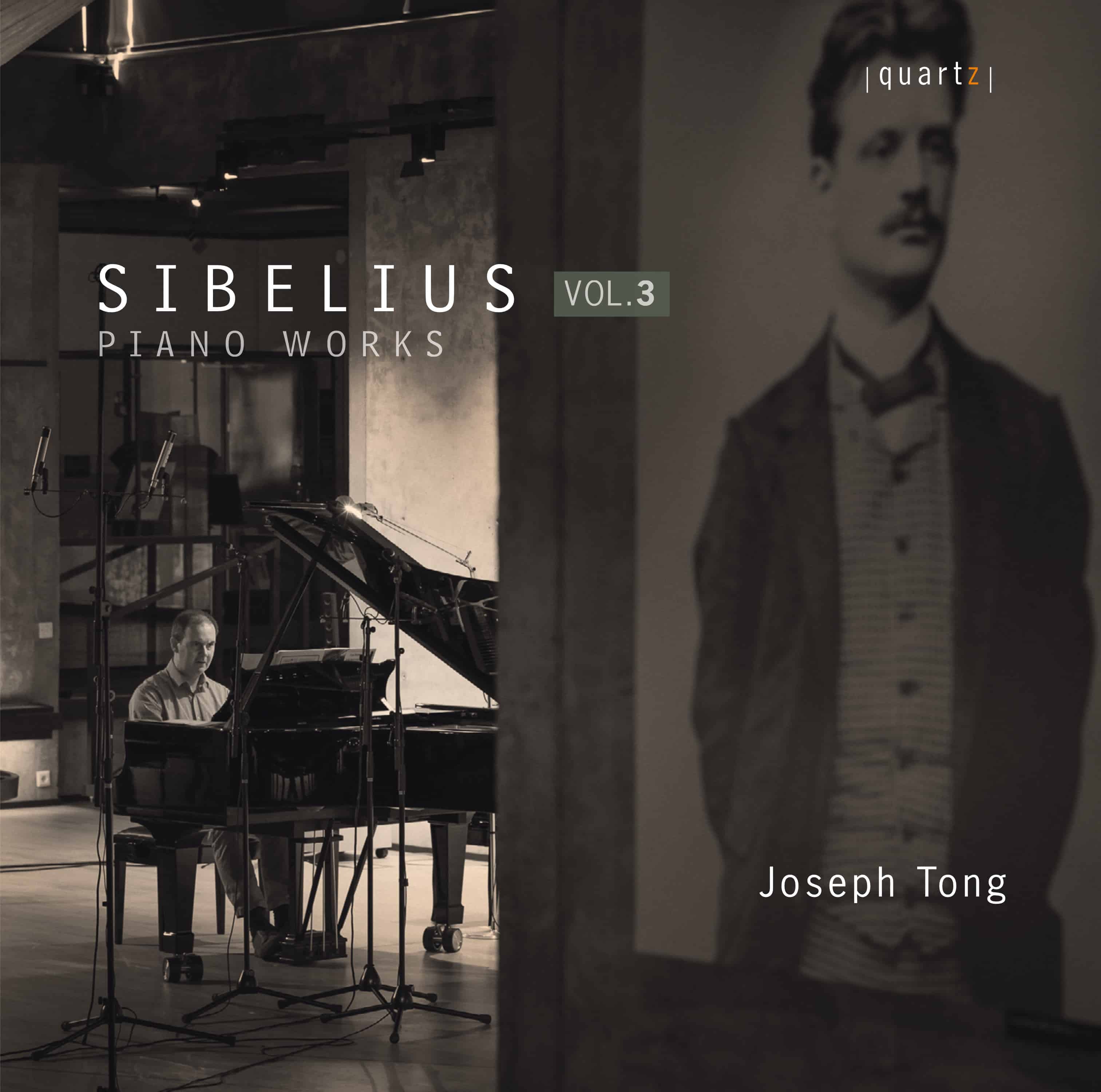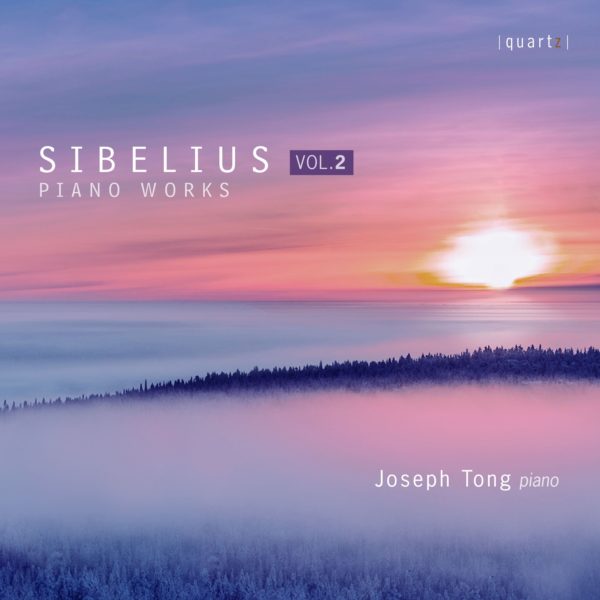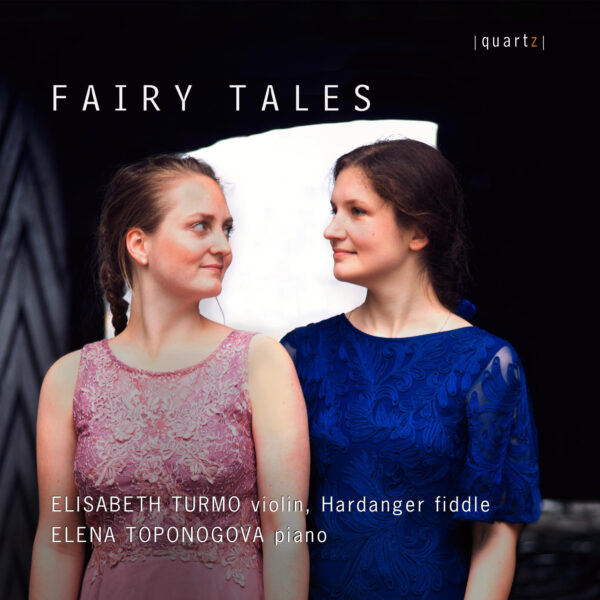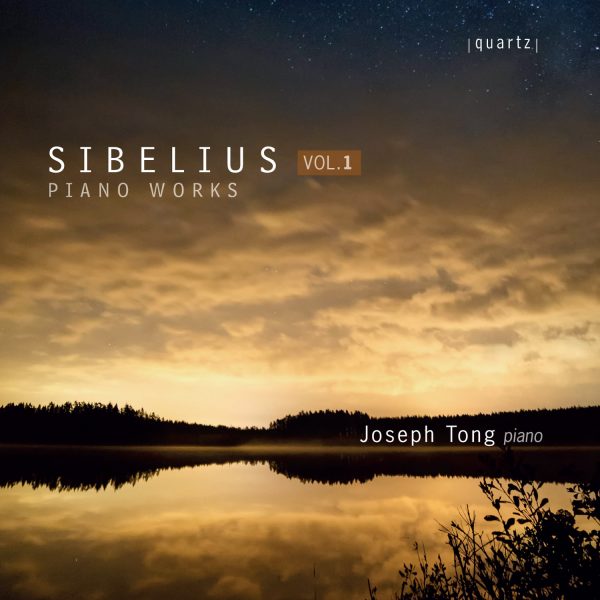Jean Sibelius Piano Works Vol. 3
£7.99 – £16.99
This has been a memorable project in many ways, not least because it is the first Sibelius recording which I have made in Finland. I was fortunate enough to collaborate with the Sibelius Museum in Turku and am extremely grateful to the Åbo Stiftelsen in Finland for awarding generous funding, without which this recording would not have been possible.
There was also a particularly happy co-incidence in that I was able to work with the Finnish-Estonian recording producer Enno Mäemets. To explain the significance of this, the first CD recording of Sibelius piano music I ever heard, and which made such a lasting impact on me, was by the Japanese pianist Izumi Tateno and recorded at the composer’s home, Ainola. I later discovered that this recording had been produced by Enno himself!
I could hardly have envisaged that things would come together in such a serendipitous way when I had the initial idea of making a recording at the Sibelius Museum after giving a concert there in 2019.
The selection of music on this album could form the basis for a concert programme and I wanted to combine a variety of styles from different creative periods of the composer’s life. My repertoire choices include some of Sibelius’s early works which are less well-known yet melodically captivating in themselves, the famous set of Six Impromptus Op. 5, a lighter collection of ‘8 Petits Morceaux’ Op. 99 and finishing with the 10 Pieces Op. 58, written in 1909 and arguably one of his greatest sets of piano pieces.
About This Recording
This has been a memorable project in many ways, not least because it is the first Sibelius recording which I have made in Finland. I was fortunate enough to collaborate with the Sibelius Museum in Turku and am extremely grateful to the Åbo Akademi University Foundation in Finland for awarding generous funding, without which this recording would not have been possible. There was also a particularly happy co-incidence in that I was able to work with the Finnish-Estonian recording producer Enno Mäemets. To explain the significance of this, the first CD recording of Sibelius piano music I ever heard, and which made such a lasting impact on me, was by the Japanese pianist Izumi Tateno and recorded at the composer’s home, Ainola. I later discovered that this recording had been produced by Enno himself! I could hardly have envisaged that things would come together in such a serendipitous way when I had the initial idea of making a recording at the Sibelius Museum after giving a concert there in 2019.
The selection of music on this album could form the basis for a concert programme and I wanted to combine a variety of styles from different creative periods of the composer’s life. My repertoire choices include some of Sibelius’s early works which are less well-known yet melodically captivating in themselves, the famous set of Six Impromptus Op.5, a lighter collection of 8 Petits Morceaux Op.99 and finishing with the 10 Pieces Op.58, written in 1909 and arguably one of his greatest sets of piano pieces.
The Florestan Suite (1889) is a semi-programmatic four-movement work clearly influenced by Robert Schumann and dedicated to the writer, Adolf Paul, a youthful friend of Sibelius. The suite is notable for its freshness of melodic inspiration and directness of communication, with a short, accompanying text printed at the head of each movement. In summary, the descriptive programme concerns the fairytale character Florestan and his encounter with water-nymphs. A forlorn, lightly articulated opening melody sets the scene as ‘Florestan goes out into the forest. He is dejected and unhappy. Scents of wild moss and wet bark.’ Sibelius uses the higher registers of the piano to great effect, creating a delicate tonal contrast using lightly pedalled textures, a technique he was to return to several years later in the second movement of the Sonata in F major, Op.12. The second movement strikes a weightier tone with thicker chordal textures, reflecting Florestan’s awe at the colossal waterfall he discovers before witnessing the transformation of foaming waters into water-nymphs. After a grandiose restatement of the opening melody using the full range of the piano, the music gently subsides. In the third movement, Sibelius returns to the minor key and a mood of tenderness prevails, expressing the pain of the hopeless love which has been awoken: ‘One of the water-nymphs has moist, black eyes and golden yellow hair. Florestan falls in love with her.’ Once again, the thematic material develops with ever-growing passion before the return of the gently flowing opening melody. The beginning of the final movement is startling in its simplicity: a delicate pianissimo cadence leading directly into an innocent, rocking theme where one can sense the coyness of Florestan’s pursuit of the nymph – but she suddenly disappears and all is lost! There is a final reprise of the wistful ‘Florestan theme’ as our hero ‘returns through the forest, dejected and unhappy.’ A charming set of pieces, with the twenty- three-year-old Sibelius giving free rein to his imagination and creating something completely distinctive in the process.
I first discovered the beautiful Largo in A major JS117 (1888) when I was sent a copy of the score by the renowned Finnish pianist Folke Gräsbeck ahead of the Korpo Sibelius Festival in 2019, at which I was one of six pianists taking part in a Sibelius piano marathon. The Largo could have been intended as part of a multi- movement work but seems entirely complete in itself. Its rising, chordal theme is richly harmonised and contrapuntal interest maintained throughout. As with the Florestan Suite, the music is characterised by transparent textures, clarity of melodic line and sprightly ornamentation. A spirited second theme in the minor key is introduced and equally shared between the hands. The reprise of the opening melody is interrupted by triplet chords combined with weighty bass octaves and as the dramatic tension noticeably heightens, Sibelius includes a brief cadenza-like passage before the main theme is nostalgically recalled, leading to an exquisitely poised ending.
The set of Six Impromptus, Op.5 was completed in the summer or autumn of 1893, the exact date of composition being unknown. The first piece is sombre in tone, set in the key of G minor and using material from the final movement of the Piano Quintet written in 1890. Sibelius maintains the same key in No.2, which, after a slow introduction, sparks into life with an energetic, dance-like theme featuring wide leaps in the melodic line. A brief central section in the major key conjures up a more carefree mood before a reprise of the opening material. The third Impromptu, in A minor, has a chordal theme which is related to the melody of No.5 and is in the style of a march. It has a certain stubbornness of character, and the angular, chordal writing is contrasted with a hushed, dolcissimo middle section which provides some tranquil respite. No.4 in E minor introduces a melancholic theme and chordal textures predominate again, later developing into a more forceful melody which breaks off tumultuously in a state of desperate agitation. Following a short pause, the gently lyrical element is immediately restored and builds up once again to a rousing final cadence. The fifth Impromptu in B minor is the most enduringly popular of the cycle and often performed on its own. Perhaps inspired by the sound of the harp or the kantele, shimmering
descending arpeggiations in the upper register evoke the spirit of Lisztian virtuosity coupled with harmonic exoticism. The rapid, arpeggiated cascades set the scene for the entry of the sustained, lyrical melody which rises defiantly in the left hand in the middle of this frequently performed and pianistically brilliant work, before finally subsiding into the darkness. The final Impromptu is the only one in a major key and this has a striking effect, releasing the accumulated tension of the previous five pieces. It has a leisurely, rocking melody which unfolds with an air of nostalgia and unhurried expansiveness. Here, Sibelius returns to the simplicity of style and texture seen in some of the earlier pieces with an expressive, minor key central section leading to a wistful, understated ending.
In complete contrast with the expressive intensity of the Impromptus, the 8 Petits Morceaux Op.99 (1922) are a good example of the shorter character pieces or ‘salon music’ which the composer often wrote to please his Helsinki publishers. In somewhat melodramatic fashion, Sibelius told his children that writing such sets of piano pieces was important ‘so that you will have bread and butter.’ The popular Op.99 set is nonetheless immediately engaging. Pièce humoristique has unexpected changes of meter and a charming melody which never really settles, and Esquisse also has a playful character with elements of a toccata-like study in broken thirds. The wonderful ‘Souvenir’ is certainly one of the highlights of the set, its eloquent, rising theme woven in counterpoint and profoundly touching in its unadorned simplicity. After the amiable, major key pairing of Impromptu and Couplet, the latter with perhaps a hint of tender melancholy under the surface, the Animoso is a torrent of hurtling, repeated chords and incessant dotted rhythms, bouncing along with exhilarating energy before teasingly breaking off during the final repeat of the theme. In No.7, Moment de valse the pianist has fun with
crossing hands and a nostalgic quality pervades the waltz-like theme with its somewhat saccharine, chordal accompaniment. To round off the set, the Petite marche is a deliberately humorous title despite the piece’s modest dimensions, as this pianistically challenging and grittily determined march unfolds in mock- serious style with the sound of drums vividly conjured by accented bass octaves.
One of the crowning achievements of Sibelius’ considerable output for the piano is the 10 Pieces, Op.58, which were clearly intended by the composer to be performed as a complete set. These were written in 1909, around the same time as Sibelius composed his third and fourth symphonies and his string quartet Voces intimae. There is a logical relationship between the keys of the last five pieces and Sibelius achieves a perfect balance between their different tempi and widely contrasting characters. Some of these are technically demanding and contrapuntally complex works, such as Air Varié (No.3) which inhabits the same compositional world as the string quartet. The opening piece Rêverie, where Sibelius meets Debussy, is suitably poetic and rhythmically supple with its pedalled textures and mingling, chromatic harmonies. Scherzino is a fleeting, quicksilver creation, with fragments of quirky phrases knitted together with subversive chromatic runs and exaggerated syncopations. In the Evening takes its title from the opening movement of Robert Schumann’s celebrated Fantasiestücke Op.12 and its pensive melody is lovingly supported by rich inner part-writing, later introducing a flowing triplet accompaniment. Other pieces also have programmatically suggestive titles, such as The Shepherd and Fisherman’s Song in which the character of the busy accompaniments take on a special importance. No.6 Dialogue is initially straightforward and upbeat in tone, but
Sibelius soon unleashes a mischievous, skipping motif heard in close imitation with playful commentaries in the form of rapid split chords. Startling modulations to remote keys are also a feature of many of these pieces, equally memorable whether within a more serious movement such as The Evening or as part of the light-hearted style to be found in Dialogue, Sibelius suddenly diverting to the unlikely key of G flat major with subtly humorous effect. In Tempo di Minuetto, the tightly rhythmic theme has a certain severity, not least given the key of E flat minor, and the style is not dissimilar to the fourth movement of Sibelius’ string quartet. Lean counterpoint and motoric rhythms are contrasted with deliberately obstinate, syncopated chordal passages and another notable feature is the sparkling treatment of the melody in the upper register, highlighting the composer’s ear for beautifully crafted piano sonorities. No.9, Serenade makes a vivid impact with its intensity of expression and full-blooded harmonies. Unmistakeably passionate in character, there is also more than a hint of loneliness and desperation in the later pianissimo transformation of its restless theme, with its fragile, trilling accompaniment. Finally, Summer Song is set in the key of E flat major and evokes the feeling of savouring the last days of summer, with the long Finnish winter to come. Harmonious and dignified, this richly expressive piece lingers in the memory. Sibelius captures the nostalgic, bittersweet aura of late summer so perfectly whilst writing for the piano in what could be termed an orchestral way, bringing this remarkable cycle of pieces to a deeply thoughtful and satisfying conclusion.
Joseph Tong
London, March 2023
Track Listing
FLORESTAN SUITE JS82
- I Moderato 1’20
- II Molto moderato 2’25
- III Andante 3’06
- IV Tempo 1 2’03
LARGO JS117
- Largo 4’36
SIX IMPROMPTUS Op.5
- Impromptu I: Moderato 1’59
- Impromptu II: Lento – Vivace 1’52
- Impromptu III: Moderato (alla marcia) 2’47
- Impromptu IV: Andantino 2’28
- Impromptu V: Vivace 3’35
- Impromptu VI: Comodo 3’46
8 PETITS MORCEAUX Op.99
- I. Pièce humoristique 1’04
- II. Esquisse 0’48
- III. Souvenir 1’43
- IV. Impromptu 1’13
- V. Couplet 1’26
- VI. Animoso 1’37
- VII. Moment de valse 1’07
- VIII. Petite marche 1’28
TEN PIECES Op.58
- Rêverie 3’43
- Scherzino 1’54
- Air varié 5’08
- The Shepherd 2’59
- In the Evening 4’27
- Dialogue 2’25
- Tempo di Minuetto 3’06
- Fisherman’s Song 3’08
- Serenade 2’28
- Summer Song3’25




